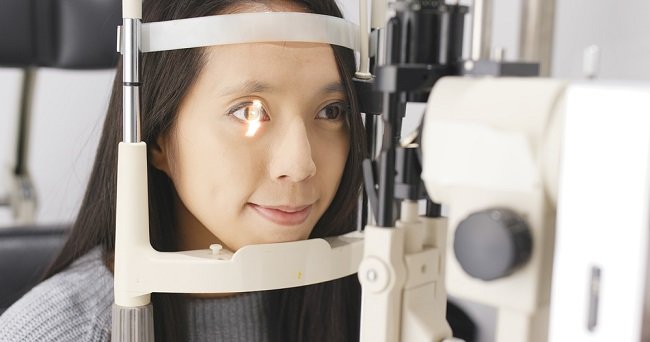Although often considered the same, cervical cancer and uterine cancer are two different types of cancer. Cervical cancer occurs in cells in the cervix, while uterine cancer occurs in cells in the uterine cavity. Both have similar symptoms, but the causes and treatments are different.
The uterus (womb) is a hollow organ that has the shape of an inverted pear. The uterus consists of three main parts, namely the dome-shaped upper part (fundus), the hollow middle part (isthmus), and the narrow lower part (cervix or cervix). The cervix empties into the vagina.

Cervical cancer and uterine cancer are both conditions that occur when abnormal cells multiply excessively and form a malignant tumor. However, cervical cancer is caused by malignant cells in the cervix, while uterine cancer is caused by malignant cells in the uterine cavity.
Facts About Cervical Cancer
Some facts to know about cervical cancer are:
1. Symptoms in the form of bleeding outside the menstrual cycle
Cervical cancer can be characterized by the discharge of blood spots or mucus mixed with blood from the vagina outside the menstrual cycle. In women who have gone through menopause, this sign can look like a period that shouldn't be happening anymore.
Patients with cervical cancer can also experience pain in the pelvis and pain during sexual intercourse.
2. Can be caused by the HPV virus
Cervical cancer can be caused by a viral infection human papillomavirus (HPV) type-16 and type-18. This virus causes changes in normal cells and causes malignancy. HPV is usually transmitted through sexual contact with an infected person. Currently, there is an HPV vaccine for women to prevent HPV infection and cervical cancer.
3. People with HIV/AIDS are more at risk
Patients suffering from HIV/AIDS have a 5 times higher risk of developing cervical cancer because their immune systems are weaker, making them more susceptible to HPV infection.
4. Can be detected with PAP smear
To detect whether a person has cervical cancer, the most frequently performed examinations are: PAP smear. In this examination, the doctor will take a sample of tissue from the cervix.
When PAP smear If the results are abnormal, the doctor will suggest further examination in the form of colposcopy and biopsy. Colposcopy is performed with an instrument equipped with a light and a magnifying camera. This tool will be inserted into the vagina to see the condition of the cervix clearly.
Meanwhile, in a biopsy, a small amount of cervical tissue will be taken as a sample to be examined under a microscope, to determine whether the cells are malignant or not.
5. Cases are quite high in developing countries
Currently, the number of cases of cervical cancer in developing countries is still quite high, while in developed countries it continues to decrease. This is because the HPV vaccine is starting to be widely used and screening PAP smear has been done regularly. PAP smear It is recommended to do it every 3 years for women aged 21–29 years, and every 5 years for women aged 30–65 years.
6. The handling is adjusted to a number of factors
Cervical cancer can be treated with surgical removal of the uterus, chemotherapy, and/or radiotherapy, depending on the stage (level of spread) of the cancer and the patient's condition.
Facts About Uterine Cancer
Uterine cancer occurs in the uterine cavity. The uterine wall has two layers, namely the endometrial layer on the inside and the myometrium (muscle) layer on the outside. About 90% of cases of uterine cancer that occur are endometrial cancer. Some facts about uterine cancer that you need to know are:
1. Many women aged 50 years and over
Uterine cancer is most common in women over the age of 50. The symptom that is often noticed for the first time is bleeding from the vagina which should not have happened again at that age because of menopause. In women who haven't experienced menopause, symptoms may include vaginal bleeding outside of the menstrual cycle, menstrual bleeding that is heavier than usual, or pain in the pelvic area.
2. Associated with levels of the hormone estrogen
Naturally, a woman's body produces the hormones estrogen and progesterone to regulate the menstrual cycle. However, after menopause, the production of the hormone progesterone stops. Estrogen that is not balanced with progesterone can cause changes in endometrial cells that can trigger cancer.
Women who are very overweight (obese) also have higher levels of estrogen, so they have a 3 times higher risk of developing uterine cancer.
3. Needs to be detected by transvaginal ultrasound
To determine whether a person has uterine cancer, the doctor may suggest additional examinations in the form of a transvaginal ultrasound, in which the scan Ultrasound is inserted directly through the vagina, to assess conditions in the uterus.
If needed, the doctor can also perform a hysteroscopy and biopsy. In a hysteroscopy, an instrument with a small camera on the end is inserted into the uterine cavity through the vagina, to examine conditions in the uterus.
4. Handling is adjusted to a number of factors
Just like cervical cancer, uterine cancer can be treated with surgical removal of the uterus (hysterectomy), chemotherapy, and/or radiotherapy, depending on the stage or extent of cancer spread and the patient's condition.
Difference Between Cervical Cancer and Uterine Cancer
Cervical cancer and uterine cancer have some basic differences, namely:
- Malignant cells in cervical cancer originate from cells in the cervix, while malignant cells in uterine cancer can originate from the lining of the endometrium or myometrium (uterine muscle) in the uterine cavity.
- Most cases of cervical cancer are caused by infection with HPV types-16 and type-18 which can be prevented by the HPV vaccine.
This is different from uterine cancer. Uterine cancer is not caused by a viral infection, so it cannot be prevented by vaccination. The main risk factors for uterine cancer are menopause and obesity.
- The main tests to detect cervical cancer are: PAP smear, which can be followed by colposcopy and biopsy. Meanwhile, in uterine cancer, the examinations that are usually recommended are transvaginal ultrasound, hysteroscopy, and biopsy.
In general, cervical cancer and uterine cancer have similar symptoms, namely abnormal bleeding from the vagina. Even so, both occur in different parts of the uterus.
If you experience bleeding outside of your menstrual cycle or you experience excessive bleeding during your period, you should consult a doctor.
To prevent cervical cancer, women who have not received the HPV vaccine are advised to consult a doctor regarding the administration of the vaccine and examination PAP smear periodically.
Written by:
dr. Irene Cindy Sunur









